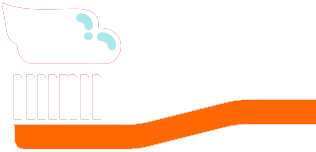Consume a Tooth-Friendly, Braces-Friendly Diet
When choosing what to eat and drink, keep in mind that your diet should keep your teeth healthy and be kind to your braces.
When consumed often, starchy, acidic, and sugary foods – and drinks – can damage tooth enamel, leading to tooth decay. Since you're at a higher risk for tooth decay while wearing braces, a low-acidic, low-starch, processed-sugar-free diet is your best bet.
Also, certain foods can loosen, break, or bend braces' wires and bands, setting back the corrective progress you've already made.
With all that in mind:
Enjoy Eating and Drinking …
- Soft fruit without small seeds, such as bananas, mangoes, and melons
- Soft or liquid foods, such as lettuce, spinach, tofu, eggs, mushrooms, fish, yogurt, and soup
- Cooked vegetables, such as carrots, beets, and green beans
- Pasta and soft, seedless bread
- Food cut up into small pieces, such as meat, poultry, pork, seafood, apples, and carrots
- Beverages w/o acids or sugar, such as milk, green tea, and water (as much water as you want)
Avoid Eating and Drinking …
- Hard foods, such as hard candies and nuts
- Crunchy foods, such as whole apples and carrots, hard bread crusts, chips, and taco shells
- Sticky foods, such as caramel, toffee, taffy, and fruit bars
- Popcorn (As you know, even when you're not wearing braces, the kernels can irritate the gums.)
- Soda pop, both diet and regular
- Sweetened drinks
And absolutely no chewing gum or ice.
Did you know? Saliva is your body's natural defense against tooth decay. So, be sure to give your beneficial saliva plenty of time to wash away acids that form after eating and drinking. A good rule to follow is to limit eating to three meals a day and two snack times.
Break Habits That Harm Your Braces
Habits such as nail-biting, unnatural tongue thrusting, pencil chewing, and nervous picking at your wires can also damage your braces. Be aware of these habits and make an effort to stop them.
Remember that damaged orthodontic hardware (wires and brackets) means extra appointments, inconvenience, and extended treatment time. If you do break your braces, be sure to make an appointment with your orthodontist immediately.
When you or your child wears braces, you're committing to caring for your teeth and braces with a rigorous oral hygiene routine and a healthy diet. The payoff to your commitment: a beautiful smile that can last you a lifetime.








